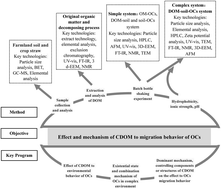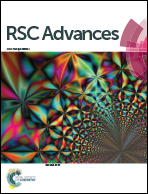Structural characteristics, analytical techniques and interactions with organic contaminants of dissolved organic matter derived from crop straw: a critical review
Abstract
Dissolved organic matter (DOM) represents one of the most mobile and reactive organic compounds in an ecosystem and plays an important role in the fate and transport of soil organic pollutants, nutrient cycling and more importantly global climate change. Advances in environment geochemistry in the past two decades have improved our knowledge about the genesis, composition, and structure of DOM, and its effect on the environment. Application of analytical technology, for example UV-visible spectroscopy (UV-Vis), Fourier transform infrared spectroscopy (FTIR), Nuclear magnetic resonance (NMR) spectroscopy, and three-dimensional fluorescence spectroscopy (3D-EEM) have resulted in these advances. At present, crop straw, as a part of energy development strategy, is mainly used for soil amendment, fodder, fertilizer and industrial materials. Moreover, the fermentation and decomposition of straw should be also promoted for ecological agriculture. However, few studies have focused on the structural properties of DOM derived from crop straw in farmland soil. In this article, DOM derived from crop straw, which is abbreviated to “CDOM”, presents active physicochemical properties that can affect the migration and bioavailability of organic contaminants (OCs) in terrestrial ecosystems. The objectives of this review paper are: (i) to discuss the structural characteristics, analytical techniques and interactions between CDOM and OCs in farmland soil; (ii) to present a critical analysis of the impact of CDOM on the physicochemical transformation and transport of OCs in farmland soils; (iii) to provide the perspectives in future research. Therefore, the findings obtained from this study can be utilized to evaluate the relations of interactions between CDOM and OCs in agricultural soils, in order to support some suggestions for future development in agricultural waste recycling, buffering of organic pollution, and the effect on the global carbon cycle.



 Please wait while we load your content...
Please wait while we load your content...